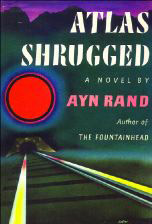THE BEST AMERICAN NONREQUIRED READING 2002 edited by Dave Eggers and Michael Cart Houghton Mifflin, $27.50
AS OF THIS WEEK, the world now contains 87 annual editions of The Best American Short Stories (the series began in 1915), 17 editions of The Best American Essays (the essay series began in 1986), and dozens of editions of other brand extensions from Houghton Mifflin, which originated the concept: The Best American Science and Nature Writing, The Best American Sports Writing, The Best American Travel Writing, The Best American Mystery Stories, and (now in its fourth year) The Best American Recipes of the Year.
Taking a yearly account of what is best and American has been a lucrative strategy for Houghton Mifflin, and many other publishers are now producing their own corruptions of the concept. These run the gamut from vital (Scribner’s estimable The Best American Poetry 2002), to redundant (The Best American Science Writing 2002, not to be confused with the aforementioned Science and Nature Writing volume), to ridiculous (the vague and ostensibly prescient Best New American Voices 2003). There are many more—at least 20 this year alone—most of whose titles include the word “American,” and all of them include the word “Best.” How can all this writing be the best? Most writing in existence isn’t even good.
INTO THIS WORLD comes The Best American Nonrequired Reading 2002. It’s a funny affront to the premise of Houghton Mifflin’s other collections—that they are essential—and yet, at the same time, it too endorses, and even canonizes, short form writing. But while other collections are unified by a particular style or subject matter—say, poetry or food or (this still cracks me up) voices—The Best American Nonrequired Reading is (in the words of its publisher) a “genre-busting collection” that is meant to appeal to a target demographic: “readers under 25.”
Series editor Michael Cart (assistant to this year’s guest editor Dave Eggers) writes in his (nearly incoherent) forward that reading “has always been too closely linked with schoolwork and the other stuff that life requires” (?) and that, as occurs in academic settings, when you place the word “required” before the word “reading,” you “suck all the joy out of the process, turning it into drudgery.” Cart’s forward is followed by Eggers’ introduction, in which he writes to the young people of the world, “I hope you find something here that removes your head and flies away or gets inside you and lights you up.” But the entire collection sags under the impossibility of its premise. If a story is well written, it will appeal to a discerning reader of any age; if not, it will not appeal to a discerning reader, no matter how young they are, no matter how much sex and speed and snowboarding the story contains, or whatever else the editors of the collection (including some teenage volunteers from a tutoring lab Eggers runs in San Francisco) have used to define Young Person Appeal. Their guiding principle seems to be that young people want to read about young people, which strikes me as reductive and untrue.
Which isn’t to say there is not good—and even some underappreciated—writing to be found in the book. Camden Joy’s smartly written story “Hubcap Diamondstar Halo,” about the physical, psychological, and spiritual fallout of an auto wreck, was originally published in the local literary magazine Little Engines, and is deserving of a larger audience. Sam Lipsyte’s “Snacks,” from Jane, about an eating disorder, is funny, desperate, and stunning, completely unlike what one usually finds in a fashion magazine. And Adrian Tomine’s comic Bomb Scare seems to validate and uplift the comic narrative form by telling a story that could not be told as sensitively in any other way—think of Art Spiegelman and Chris Ware.
But the flow between stories, and their relation to one another, is hopelessly forced. Interweaving and conflating the genres of fiction and nonfiction, while it has its merits, is confusing. Going from a sincere piece about youthful followers of the Dalai Lama to an anything-but-sincere piece from The Onion (“Local Hipster Overexplaining Why He Was at the Mall”) is always going to be an awkward transition, and an entire collection composed of such reckless disorderliness is not “genre-busting” in a good way—it’s inarticulate.
If this was originally seen as an opportunity to give youthful, “genre-busting” work a bigger audience, the editors have, for the most part, squandered it. Most of the book is culled from the likes of The New York Times, Time, The New Yorker, and The Atlantic Monthly. What an educated, highly sophisticated under-25-year-old crowd! Why are they going to read a book outfitted with training wheels? I can’t shake the impulse that, if you are going to fashion a new kind of collection and spit in the eye of the conventional canon, you shouldn’t go back to the same sources other anthology editors spend the year scanning. Could David Sedaris be more frequently anthologized? The book may be packaged in an alternative way (the only word I can think of to describe the cover is “zany”) but the contents don’t deliver on that promise. In a very literal way, the book lives up to its name.








